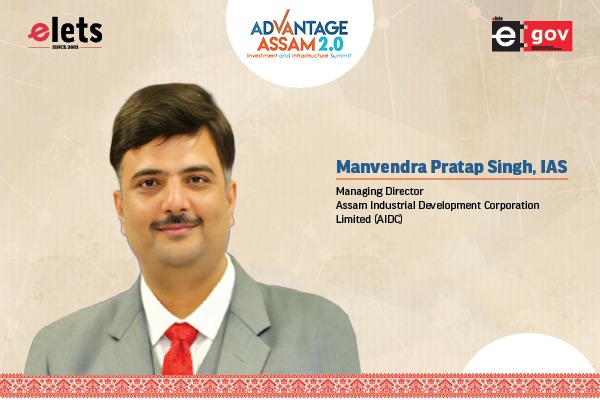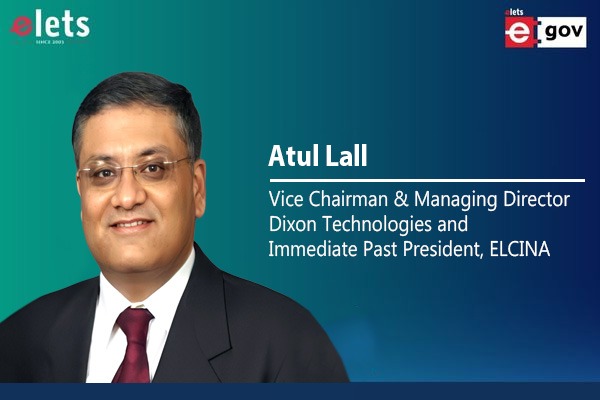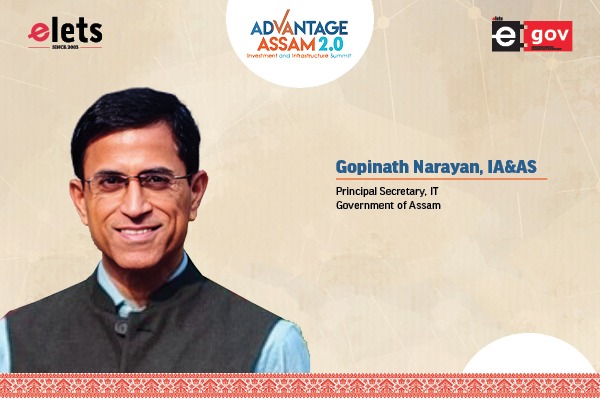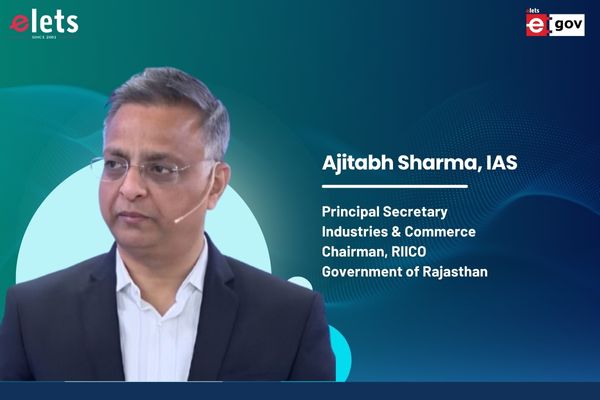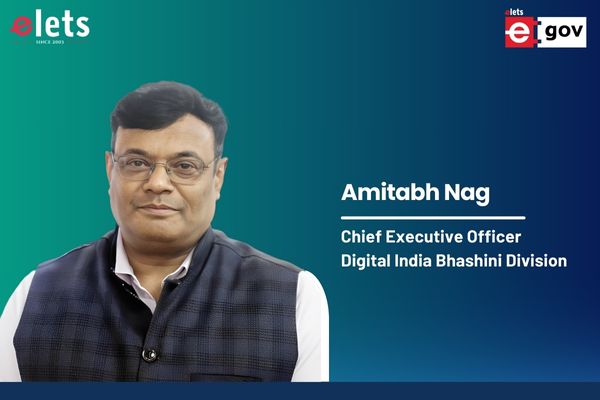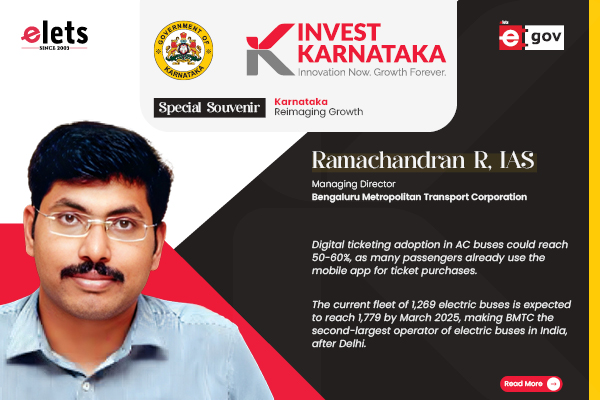
Bengaluru Metropolitan Transport Corporation (BMTC) facilitates free travel for 22 lakh women passengers daily under the Shakti scheme, demonstrating its financial capacity to manage timely payments. The expansion target of 7,000 e-buses includes 3,500 per year, which is 3,000 – 12-meter buses and 500 midi buses—to support metro feeder services. Ramachandran R, IAS, Managing Director, Bengaluru Metropolitan Transport Corporation shared his insights in an exclusive interaction with Elets News Network (ENN). Edited excerpts:
Bengaluru Metropolitan Transport Corporation (BMTC) has been moving towards cashless and contactless public transport solutions. Could you provide statistics on the current percentage of BMTC passengers utilising digital payment methods, and how this compares to traditional cash transactions?

BMTC generates a daily revenue of approximately 6.5 crores, out of which 3.8 crores comes from non-Shakti passengers. The Shakti scheme covers lady passengers, while non-Shakti revenue is generated from male passengers. Recently, BMTC reached a milestone of 1 crore in UPI transactions within the 3.8 crore non-Shakti revenue.

Currently, BMTC employs Electronic Ticketing Machines (ETM) but relies on static QR codes for UPI transactions. Conductors use a dedicated app to verify payments. QR codes are placed around bus windows, allowing passengers to scan, pay via UPI, and share the reference number with the conductor, who verifies the last three digits through the app. To streamline this process, BMTC is exploring dynamic QR codes, which would enable direct transactions through the ETM machines.

These ETM machines are similar to those used in retail stores, such as Pine Labs, and support various payment methods, including Euro, Mastercard, Visa, NCMC cards, and tap-and-pay options. Debit and credit card transactions are also possible. While a tender has been issued to upgrade to dynamic QR codes, the current reliance on static QR codes presents challenges.

Of the 3.8 crore non-Shakti revenue, 1 crore is transacted digitally, accounting for approximately 35% of cashless transactions. Overall, 12% of BMTC-issued passes are digital. BMTC serves a 25 km radius from the central business district, catering to both urban and peri-urban (rurban) commuters. Many daily travelers from these areas still prefer traditional ticketing methods. However, conductors can issue digital passes through the in-house Namma BMTC app, where passengers can also purchase them online. Despite these efforts, digital pass adoption remains at 12%, with a target of reaching 33% by the end of March.
Also Read | AI and the Next Wave of IT Transformation
Bengaluru, as a cosmopolitan city, has a diverse commuter base, including lower-middle-income groups. Even beggars at traffic signals use UPI transactions, showcasing the need to increase digital payments. At 35%, the current level of digital transactions in non-Shakti revenue is relatively low, necessitating further expansion.
BMTC was among the first transport corporations to introduce AC services, including Volvo buses, on urban routes. These services operate on airport and outer ring road routes, with planned expansion to the peripheral ring road. Digital ticketing adoption in AC buses could reach 50-60%, as many passengers already use the mobile app for ticket purchases. Digital transactions offer convenience, security, and a contactless experience, which is particularly beneficial in the post-COVID era.
Following the recent 15% fare hike, ticket prices now include fractional amounts, making cash transactions cumbersome. Conductors often struggle to collect exact change for small differences, such as one additional rupee. While insignificant to passengers, these amounts affect revenue targets and complicate cash handling. UPI transactions provide a seamless alternative.
The introduction of dynamic QR codes will further ease the process for both passengers and conductors. Currently, conductors must manually verify each ticket, enter amounts, tear tickets, collect cash, provide change, and issue receipts—an exhaustive process. Moving towards digital payments will simplify their tasks, making transactions more efficient. The benefits of a cashless system are well understood, and BMTC is committed to increasing digital adoption.
How is BMTC advancing sustainable mobility with electric buses? What is the current fleet size and percentage of e-buses, and what are the expansion targets for the next two years? How will this shift contribute to reducing emissions and improving the commuter experience?
Electric buses are the future of sustainable mobility. However, it is important to recognize that electricity is not always a green power source. While hydroelectric power is sustainable, other sources such as nuclear and thermal power plants contribute to environmental concerns. India, as one of the fastest-growing economies, faces increasing energy demands and security challenges that shape global economics and geopolitics. To prevent worsening air pollution, as seen in Delhi, transitioning to electric buses is crucial, regardless of the energy source.
The Government of India, through the Ministry of Heavy Industries and the Ministry of Road Transport and Highways, is actively promoting electric buses with subsidies under initiatives like FAME I, FAME II, the Prime Minister’s E-Seva, and E-Drive schemes. Currently, guidelines have been released for nine metro cities, planning to introduce 12,000 electric buses with government subsidies. BMTC operates 300 Switch electric buses and 90 JBM midi (9-meter) buses, with an additional fleet expansion at competitive pricing. The current fleet of 1,269 electric buses is expected to reach 1,779 by March 2025, making BMTC the second-largest operator of electric buses in India, after Delhi.
BMTC is at the forefront of sustainable mobility, with 320 AC electric buses replacing ageing diesel buses over 15 years old. Currently, electric buses account for 20% of the fleet, with plans to increase this to 50% in the future. Tata Motors, which produces the best-selling Nexon EV in Asia, is supplying 921 + 148 buses at one of the lowest-ever Gross Cost Contract (GCC) rates in India. Each bus receives a subsidy of ₹39 lakh from the Government of India and operates under the GCC model for 12 years. This model significantly reduces operational costs, with electric buses saving ₹15 per kilometre compared to diesel buses, which cost ₹28 more per kilometre. City transport corporations globally often operate at a loss, but electric buses help mitigate financial challenges by reducing costs and avoiding losses.
Under the GCC model, the operating agency handles drivers, maintenance, and electricity charges, while BMTC provides conductors for ticket collection. Expansion plans for the next two years include procuring 7,000 additional electric buses under the Pradhan Mantri E-Drive scheme. The Government of Karnataka, with approval from the Honorable Transport Minister and the Chief Minister, has accepted a Payment Security Mechanism (PSM) to ensure timely payments. This mechanism deducts payments directly from the state’s consolidated fund if BMTC fails to meet the deadline. Karnataka’s progressive approach to transport infrastructure enables the smooth adoption of this mechanism.
BMTC facilitates free travel for 22 lakh women passengers daily under the Shakti scheme, demonstrating its financial capacity to manage timely payments. The expansion target of 7,000 e-buses includes 3,500 per year, which is 3,000 – 12-meter buses and 500 midi buses—to support metro feeder services. The Government of Karnataka and the Government of India are making significant investments in metro rail infrastructure, yet current metro ridership remains at only 6 lakh passengers daily. Enhancing last-mile connectivity through metro feeder buses is essential to increase ridership and optimize investment returns.
To achieve this, BMTC will integrate metro schedules with its mobile app, allowing real-time tracking of train arrivals and passenger flow. Based on analytics and passenger feedback, buses will be stationed strategically near metro exits to facilitate seamless transfers. Electric metro feeder buses will enhance commuter experience by reducing vibration, noise pollution, and emissions compared to diesel buses. This initiative will encourage greater public transport usage and contribute to a cleaner, more efficient urban mobility system.
How is BMTC leveraging technology to enhance the commuter experience with real-time tracking via the “Namma BMTC” app? What percentage of the fleet is currently GPS-enabled, and how has this digital transformation impacted passenger satisfaction and ridership?
Real-time tracking in BMTC buses is enabled through an Automatic Tracking Device (ATD). All new buses come with inbuilt ATD, while older BS3 and BS4 vehicles have been retrofitted with the device. These devices connect to satellites via GPR (Global Pocket Radio Service) and utilize plastic SIM cards compatible with 3G, 4G, and 5G networks. The system integrates with BMTC’s command and control center and the DMTC app.
This initiative was funded under the Nirbhaya scheme, with a total allocation of ₹46.81 crore—60% contributed by the Government of India and 40% by the Karnataka government. The project has been successfully implemented, and the data servers have been migrated to the Karnataka State Data Center.
Real-time tracking is essential for ensuring timely bus services. Additionally, it plays a crucial role in passenger safety. In distress situations, women can use the panic button installed in bus handrails. However, recognizing its limitations, the BMTC app provides an alternative distress button. This function is not restricted to passengers inside buses; it can be used at bus stops or waiting areas. Once activated, the distress signal reaches BMTC, and one of the 25 SARTI pink Bolero patrolling vehicles is dispatched. Simultaneously, SMS alerts are sent to the user’s emergency contacts, ensuring immediate awareness and response.
The system also improves operational efficiency by monitoring bus schedules. Tracking data helps analyse fleet performance—whether buses are on time, delayed, or ahead of schedule. Any deviation from schedules results in revenue loss. BMTC adheres to the All India Standard 140 for compliance, ensuring data accuracy. The tracking system updates every 10 seconds, though real-time functionality is limited by current technology.
Geo-fencing has also been implemented to monitor route adherence. Deviations from designated routes trigger alerts, helping prevent route diversions that may cause passengers to miss their buses. Additionally, tracking ensures that stops are not skipped and records the duration of each halt.
Surveillance measures further enhance security. Older buses are equipped with two cameras, while midi and non-AC buses have a 3+1 camera setup. The 320 AC buses have five cameras—two at the front and rear and three inside the cabin. These cameras, along with GPS-based geo-fencing, help monitor crew behavior, reducing the likelihood of misconduct.
To enhance passenger information, 500 major bus stops now feature digital LED-based passenger information systems, displaying real-time bus arrival data. This technology not only improves commuter experience but also enhances scheduling efficiency.
A key benefit of digital tracking is its role in route scheduling adjustments. Traditionally, route travel times were estimated manually. For example, a route with 15 stops may have been initially calculated to take seven hours. However, with increasing traffic, the actual time may have extended to eight and a half hours. Despite this, depot schedules remained unchanged, leading to discrepancies in overtime calculations. With digital tracking, precise time logs are recorded down to the second, ensuring fair overtime payments for crew members.
Overall, BMTC’s real-time tracking system enhances passenger safety, improves operational efficiency, and provides valuable data for optimising fleet management.
The Karnataka Digital Economy Mission’s “Beyond Bengaluru” program aims to promote digital growth in clusters outside the capital. How is your organisation collaborating to improve transportation connectivity to these emerging tech hubs, and what metrics are being used to assess the effectiveness of these efforts?
BMTC plays a crucial role in supporting Bengaluru’s IT and industrial clusters by offering chartered and dedicated services tailored to the needs of corporate employees and school commuters. One such initiative serves the Outer Ring Road Companies Association, as well as townships near Electronic City, where IT employees operate on flexible work shifts.
To ensure timely office arrivals, companies hire BMTC buses under the chartered service model. These buses operate exclusively for the employees of a particular company, with the company logo displayed on the vehicle. Schools and other institutions also utilize BMTC’s chartered services, paying a fixed rate for dedicated transportation.
Also Read | BMTC’s Journey Towards Cashless & Contactless Public Transport
Additionally, BMTC offers a dedicated pass, allowing commuters to board any BMTC bus across the city. Unlike monthly passes, these are designed for specific service routes, providing a reliable and flexible travel option.
Beyond improving commuter convenience, these services make Bengaluru a more attractive investment destination. When foreign companies or industries establish operations in the city—even in areas 25 kilometers away—BMTC ensures a steady flow of skilled and semi-skilled workers from various parts of Bengaluru to their workplaces and back.
With BMTC’s reliable connectivity, businesses can confidently invest in Bengaluru, knowing that efficient transportation solutions are in place to support their workforce. Bengaluru never stops, because we keep running.
Be a part of Elets Collaborative Initiatives. Join Us for Upcoming Events and explore business opportunities. Like us on Facebook , connect with us on LinkedIn and follow us on Twitter, Instagram.
"Exciting news! Elets technomedia is now on WhatsApp Channels Subscribe today by clicking the link and stay updated with the latest insights!" Click here!




